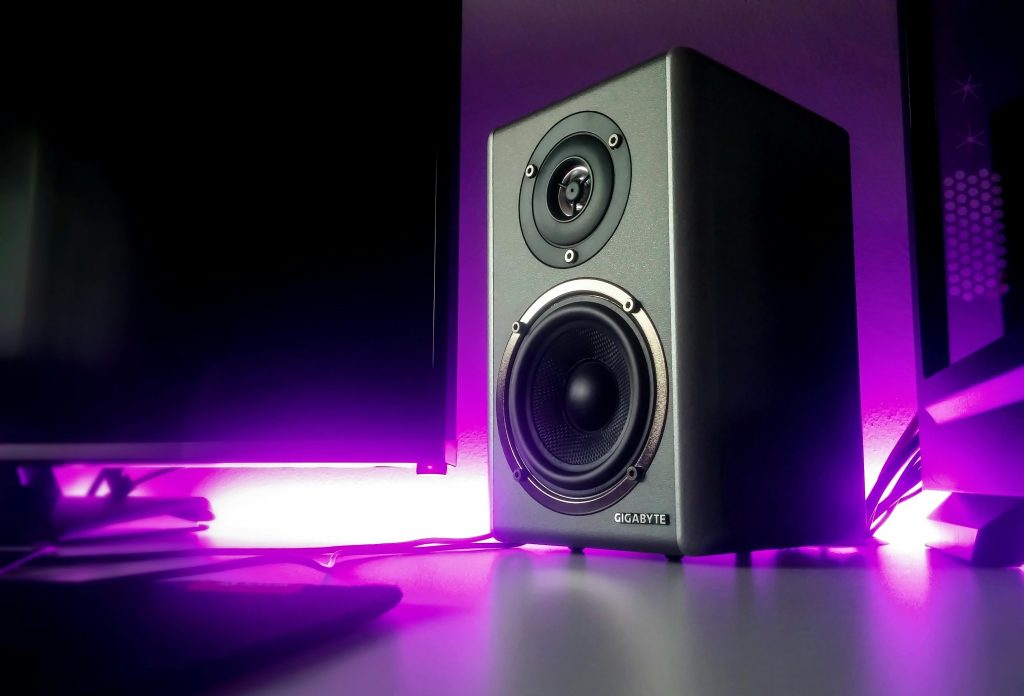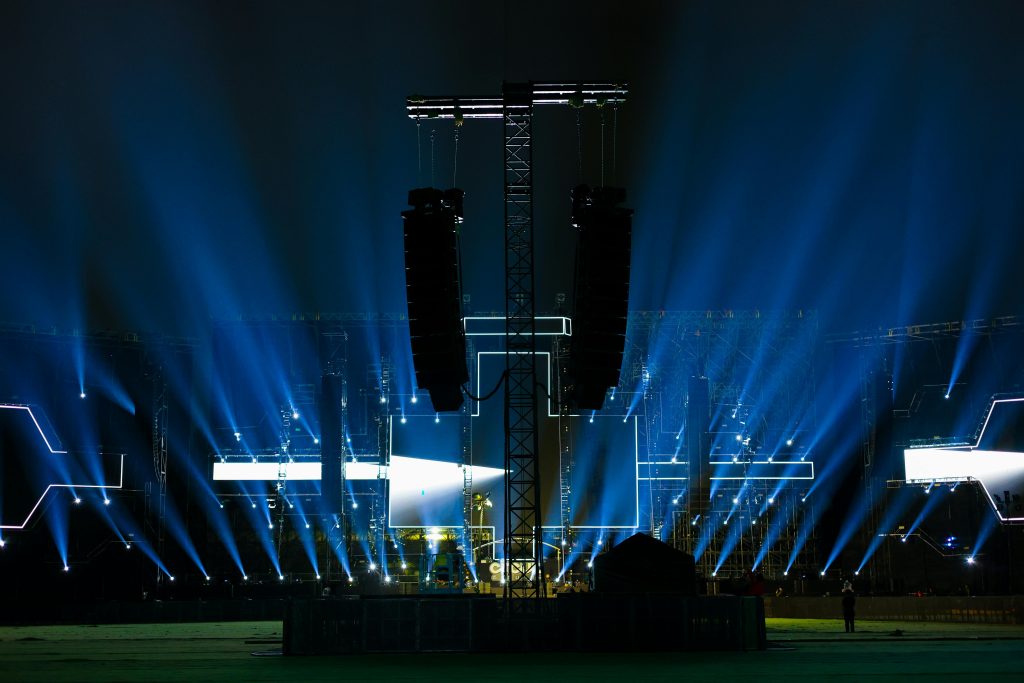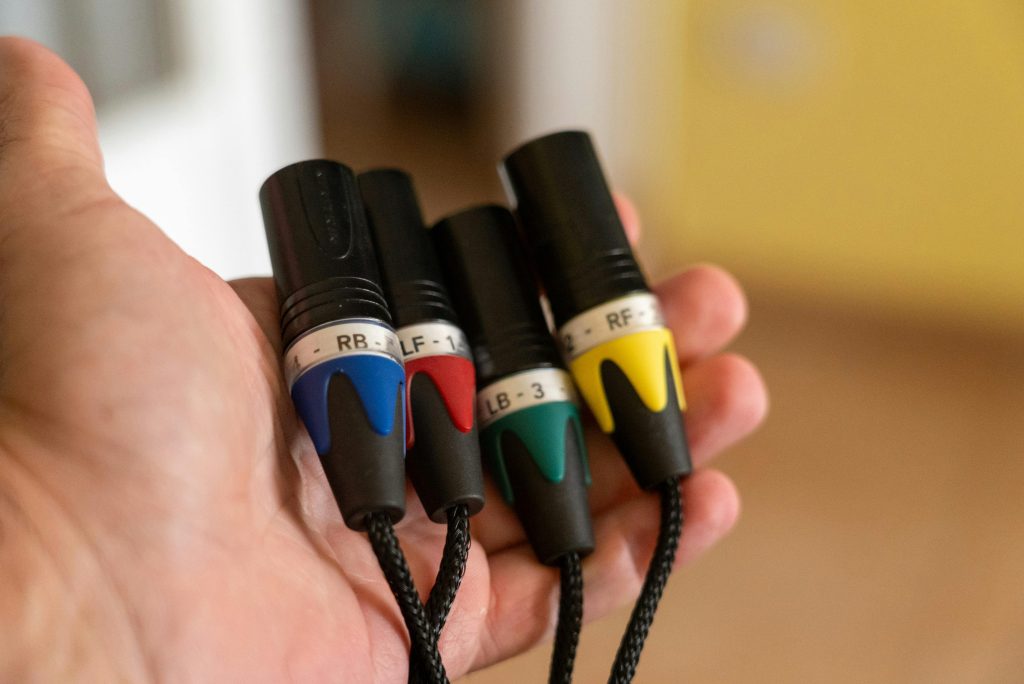Essential DJ Equipment: Choosing and Setting Up Your Gear
DJing is more than just playing music; it’s an art of mixing songs, creating moods, and keeping a crowd excited. To start this exciting journey, one of the first things you need to understand is your DJ equipment. Knowing your gear well means you can use it to its fullest power, mixing songs smoothly and adding your own style with effects and tricks. Whether you want to start mixing music at home, play at a friend’s party, or perform in clubs and festivals, getting familiar with the equipment is the foundation for all these adventures.
There are different kinds of DJ setups, such as DJ controllers, turntables, and CDJs. Each one offers unique ways to mix music. Controllers are great for beginners because they are compact and work with software on your laptop. Turntables give you a classic, hands-on feel with vinyl records, perfect for DJs who love scratching and the warm sound of vinyl. CDJs are professional digital players used in many clubs and festivals, prized for their precision and reliability. Choosing the right setup depends on your style, where you plan to play, and how you want to grow as a DJ.
But equipment is more than just decks and players. Mixers act as the control center, helping you blend songs smoothly by controlling volume, shaping sound with equalizers and filters, and adding creative effects. Having quality headphones, speakers, and monitors is vital because they let you hear every detail of the music, even in a loud environment. Plus, managing your cables and power properly keeps your gear safe and your setup tidy, so you don’t get caught in a tangle before the music even starts.
As a beginner DJ, understanding how to pick gear wisely according to your budget and goals is important. You don’t need the most expensive equipment at first. Instead, start with tools that help you build skills without overwhelming you. Setting up your home DJ booth properly—thinking about space, comfort, lighting, and ventilation—makes practicing fun and effective. Whether you prefer the freedom of a portable rig to move around or a permanent setup for serious mixing, knowing the pros and cons will help you find your perfect fit.
Finally, taking care of your equipment through regular cleaning and checking connections ensures your gear works smoothly every time you play. Troubleshooting common issues calmly can save a gig and keep you in control. This lesson will guide you through all these important parts of DJ equipment, so you can start mixing like a pro, create seamless transitions, and move your audience. By mastering your gear, you unlock the full power of your music and begin your path towards becoming a confident and creative DJ.
Overview of DJ Setups (Controllers, Turntables, CDJs)
Did you know that the way a DJ works with music depends a lot on the gear they use? The main types of DJ setups are DJ controllers, turntables, and CDJs. Each of these setups has special features that suit different styles of DJing. Think of them like three different kinds of tools for making music on the spot. Let's explore each one in detail.
DJ Controllers: The All-In-One Digital Mixers
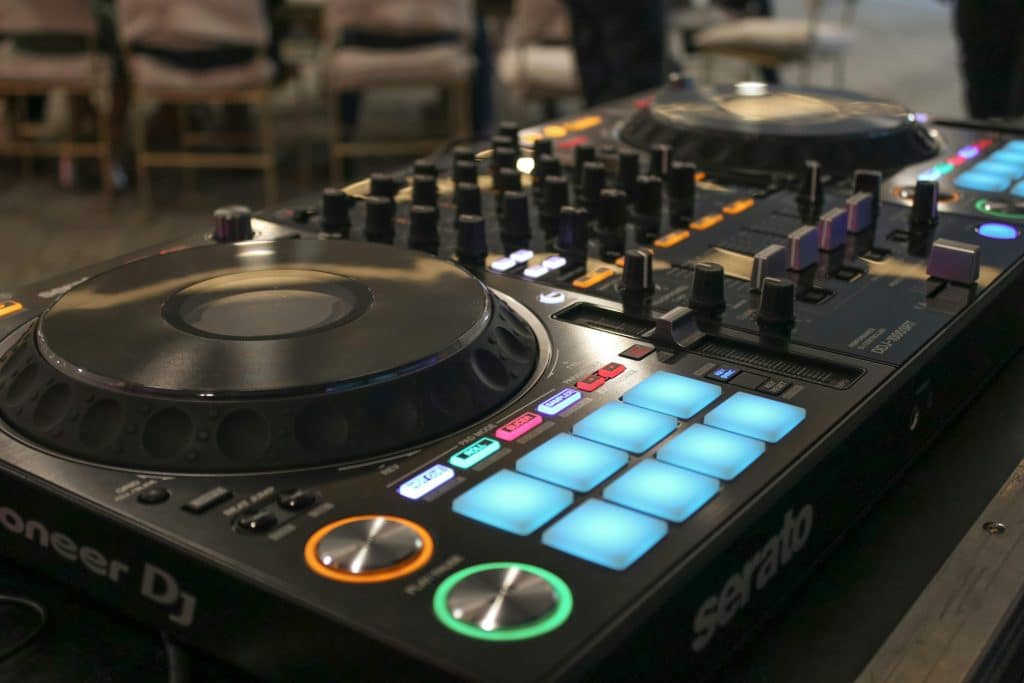
DJ controllers are popular for beginners and mobile DJs. They are like a remote control for DJ software on a laptop. These devices combine the mixer, decks, and effects pads in one compact unit. A DJ controller connects to a laptop using a USB cable. This connection lets the DJ use music files stored on the computer.
For example, a beginner DJ named Jamie uses a DJ controller at home. Jamie plugs the controller into a laptop, opens DJ software, and starts mixing songs easily. The controller has buttons to play, pause, and scratch tracks, similar to traditional DJ gear. It also has knobs for adjusting volume and effects. Because it is small and light, Jamie can carry it to friends' houses for parties.
Key features of DJ controllers include:
- Compact size and easy to carry
- Works with many DJ software programs
- Offers built-in effects and sampling tools
- Customizable layouts to match DJ preferences
- Usually comes with a beginner-friendly software package
Controllers are perfect when portability matters. For example, DJ Alex plays at house parties in different locations on the same night. The light DJ controller and laptop setup save time and space compared to heavier gear. However, controllers sometimes lack the full tactile feel of vinyl or professional media players.
Turntables: Classic and Tactile Vinyl Setups
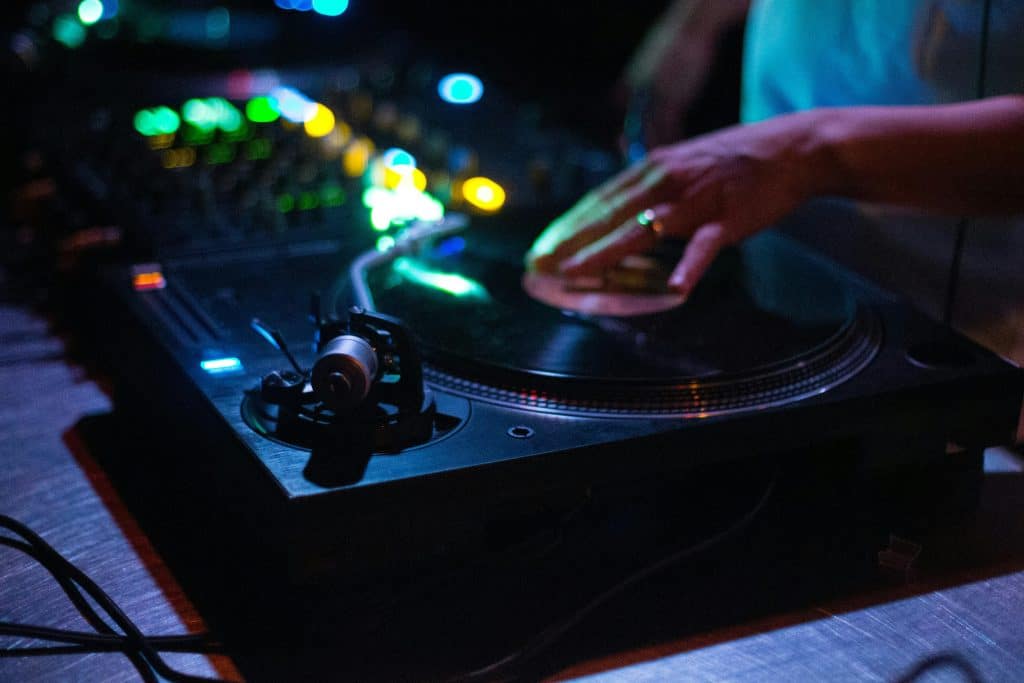
Turntables are the traditional DJ tool. They play vinyl records and give DJs a hands-on experience with music. Many DJs love turntables because of their warm sound and physical control. These setups include two turntables with vinyl records and a DJ mixer in the middle.
Imagine Sarah, who collects vinyl records and enjoys the old-school style of DJing. She spends time learning to scratch and cue tracks using her hands on the spinning records. Sarah’s setup offers unique tactile feedback that a controller or CDJ can't match. The setup requires slipmats under the records to help with scratching and control.
Turntable setups can also include modern software by adding a DJ interface and special control vinyl. This way, Sarah can mix digital files but still use the turntable’s feel. This hybrid setup lets her enjoy the tactile control while accessing a vast digital music library.
Turntable setup pros include:
- Physical feeling of music control
- Warm sound quality from vinyl
- Great for scratching and turntablism
- Appeals to music lovers and vinyl collectors
Keep in mind, turntables can be large and not as easy to move. They also need extra gear like cartridges, needles, and sometimes a DJ interface to connect to computers. Learning to use turntables has a steeper curve but rewards DJs with unique skills.
CDJs: Professional Digital Media Players
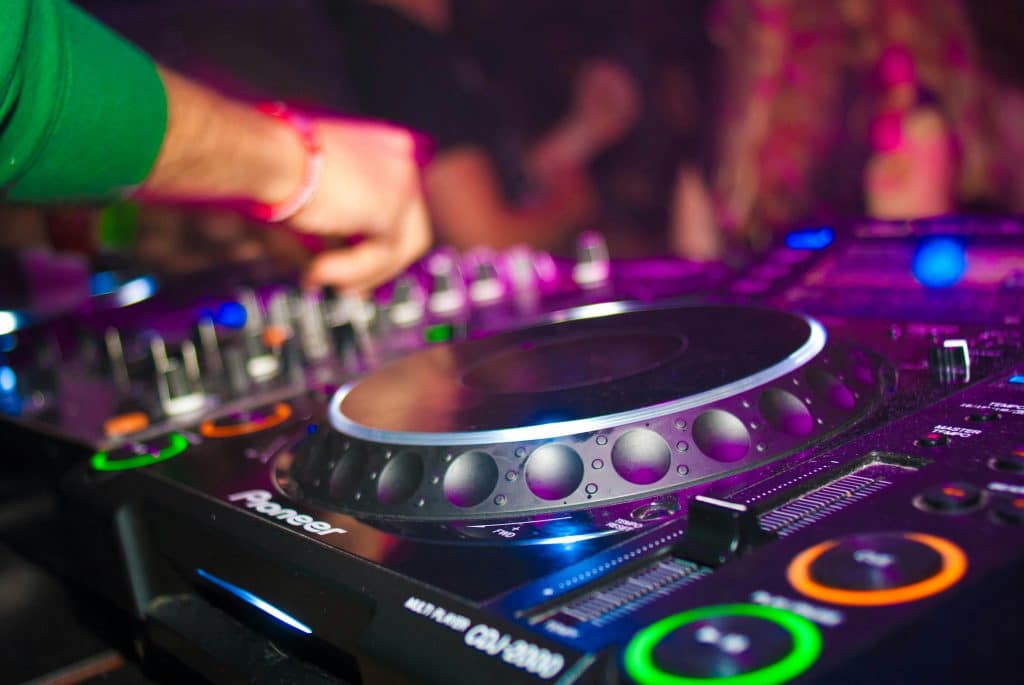
CDJs are the high-end, professional DJ machines commonly seen in clubs and festivals. They play music from USB drives, CDs, and even SD cards. These players look like turntables but use digital files instead of vinyl. CDJs connect to a mixer and offer precise control over tracks.
For instance, Maria is a professional DJ who uses CDJs at big events. She loads her music collection onto USB drives and plugs them into the CDJs on stage. The CDJs let her set hot cues, loops, and beat-match tracks with great accuracy. Because they are standard in clubs, Maria can perform almost anywhere without new equipment.
Features of CDJs include:
- Intuitive, fast access to large digital music libraries
- High precision for beatmatching and mixing
- Industry-standard gear used in clubs and festivals
- Standalone operation without needing a laptop
- Supports various digital file formats and media
Though CDJs are powerful, they tend to be more expensive and less portable than controllers. They also require some learning to master all features. DJs who want a professional, future-proof setup often choose CDJs for their reliability and performance options.
Comparing the Setups: Choosing What Fits You
When choosing between controllers, turntables, or CDJs, think about your needs and style. Here are some practical tips:
- If you want to start DJing at home, travel to small parties, and keep costs low, a DJ controller is the best choice. It’s easy to carry and works well with laptop software.
- If you love vinyl records, want the feeling of real turntables, and enjoy scratching, then turntables are right. Remember, they need space and some patience to learn.
- If you aim to DJ in clubs or big events and want to stay with pro-standard gear, CDJs are ideal. They deliver digital precision and don’t require a laptop.
Here's a real-world example to help decide. Imagine a DJ named Mark. Mark wants to mix digital music files and play at small venues. He chooses a DJ controller because it fits his budget and is easy to use on the go. Another DJ, Lisa, collects vinyl and likes mixing with hands-on control. She picks turntables for that classic sound and feel. Meanwhile, expert DJ Jenna performs at festivals. She uses CDJs for fast, reliable digital mixing without a laptop.
Tips for Using DJ Setups Effectively
- Always practice with your setup before playing live. This builds confidence and skills.
- For controllers and CDJs, organize your digital music well using playlists and tags. It speeds up finding tracks during a set.
- If you use turntables, keep your vinyl clean and handle needles carefully to avoid damage.
- Learn software features that match your gear. Many DJ controllers and CDJs come with special functions that improve mixing.
- Consider your space and transport needs. Controllers are best for carrying around; turntables and CDJs are often part of a fixed setup.
Step-by-Step: Starting with a DJ Controller Setup
Here’s a simple way to begin DJing with a controller:
- Connect your DJ controller to your laptop using a USB cable.
- Open the DJ software that came with your controller or one you choose.
- Load your music files into the software’s library.
- Use the controller’s decks to play and mix tracks.
- Practice adjusting volume, adding effects, and beatmatching tracks manually or using sync functions.
- Keep experimenting and try mixing different genres to find your style.
This clear approach shows how controllers blend hardware with software. It gives new DJs a fast way to start making music.
Step-by-Step: Using a Turntable Setup
Here’s how to use turntables for DJing:
- Place a vinyl record on the turntable platter.
- Use slipmats under the record for easier control.
- Drop the needle gently on the record to start playing.
- Use the mixer to control volume and mix between two turntables.
- Practice scratching by moving the record back and forth by hand.
- Learn to cue tracks by listening through headphones before playing out loud.
Many DJs find this tactile process rewarding but it takes patience and practice.
Step-by-Step: Getting Started with CDJs
If you choose CDJs, follow these steps:
- Save your music files on a USB drive or CD.
- Plug the USB or CD into the CDJ player.
- Use the buttons to load, cue, and play songs.
- Set hot cues to jump to important parts of tracks quickly.
- Use the tempo slider and jog wheel to beatmatch tracks.
- Connect the CDJs to a DJ mixer and speakers for sound output.
CDJs give you powerful control without needing a laptop, making them a good choice for club DJs.
Mixers: Functions and Features
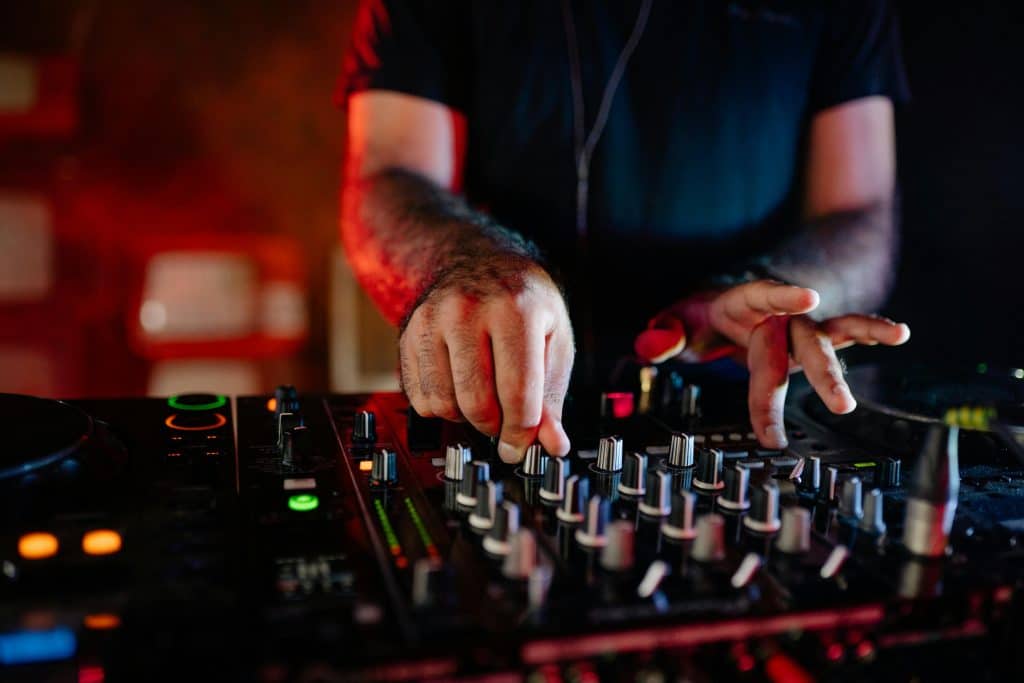
Did you know the DJ mixer is like the control center of your whole DJ setup? It helps you blend and shape sounds from different songs and devices. Think of it as a mixing bowl where you combine ingredients to make a tasty recipe, but instead of food, you mix music tracks.
We will look closely at how mixers help you control sound, perform smooth transitions, and add creative effects. These are the key jobs your mixer does that you need to know well.
1. Mixing and Volume Controls
The main job of a DJ mixer is mixing sounds from different sources. Usually, these are two or more songs playing at the same time. With a mixer, you choose how loud each song is. You can slowly bring up the volume of the next song while lowering the first one. This makes your transitions smooth instead of sudden or jarring.
Mixers have sliders called channel faders. Each slider controls the volume of one sound source. For example, if you have two songs playing, you use two channel faders. Push one slider up and the other down to switch between songs.
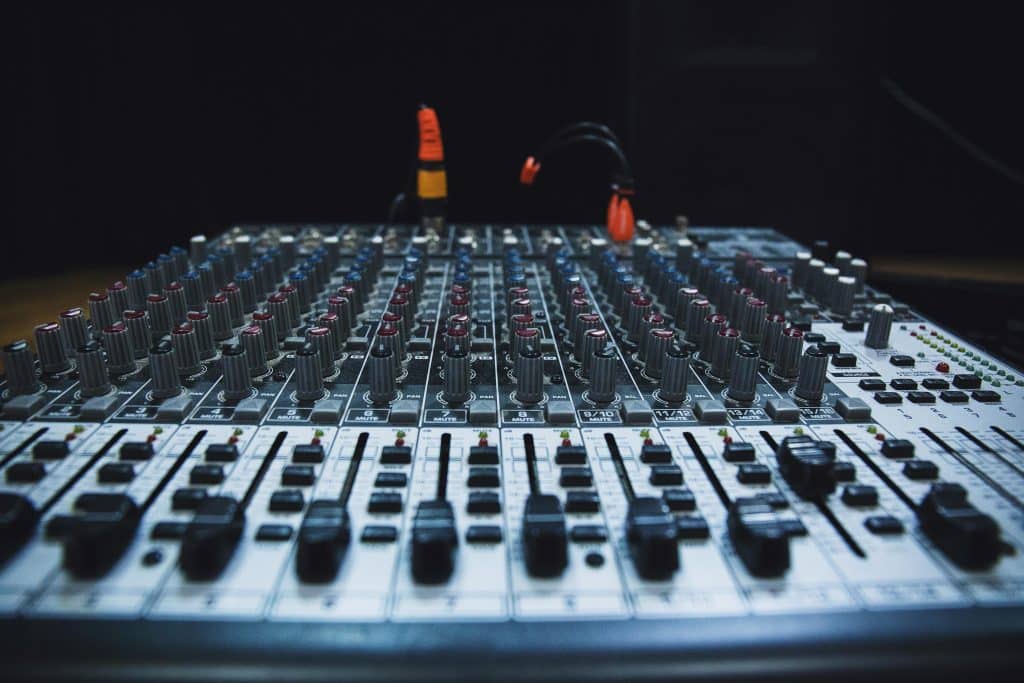
In practice, imagine you’re playing a party. You start with Track A playing loud. When you want to switch to Track B, you slowly lower Track A’s volume while raising Track B’s. The mixer lets you control this perfectly so the crowd hears a smooth change without awkward gaps.
Besides channel faders, there is a master volume control. This controls the overall loudness of all combined sounds going to the speakers. It’s like the final volume knob for your whole mix.
Practical tip: When practicing, focus on moving the channel faders gently. Try to avoid sudden jumps in volume because they can distract listeners. Smooth volume movements help keep the energy flowing on the dance floor.
2. Crossfader: The Quick Switcher

One very important tool on most mixers is the crossfader. It’s a horizontal slider usually located at the bottom of the mixer. The crossfader lets you switch between two channels quickly and smoothly.
Unlike channel faders, which control volume levels one by one, the crossfader blends the two channels. When the slider is fully to the left, you only hear the left channel. When it is fully to the right, you hear only the right channel. Positions in the middle mix both channels equally.
This is especially useful for fast DJ moves like cutting between songs or scratching. Hip-hop and scratch DJs rely a lot on a smooth, fast crossfader to make quick transitions and effects.
For example, during a live mix, you might want to quickly switch from one song to another without fading. Using the crossfader, you slide it fast from left to right to bring in the new track instantly. You can also slowly drag it to mix the two songs as you want.
Some mixers allow you to adjust how the crossfader works. You can change its “curve” or sensitivity. This lets you control how fast it switches sound from one channel to the other—helping beginners to get the hang of it or pros to perform sharp cuts.
Practical tip: When you start mixing, practice using the crossfader to move between two songs. Try slow blends and quick cuts to get familiar with its feel and control.
3. Equalizers and Filters: Shaping Your Sound
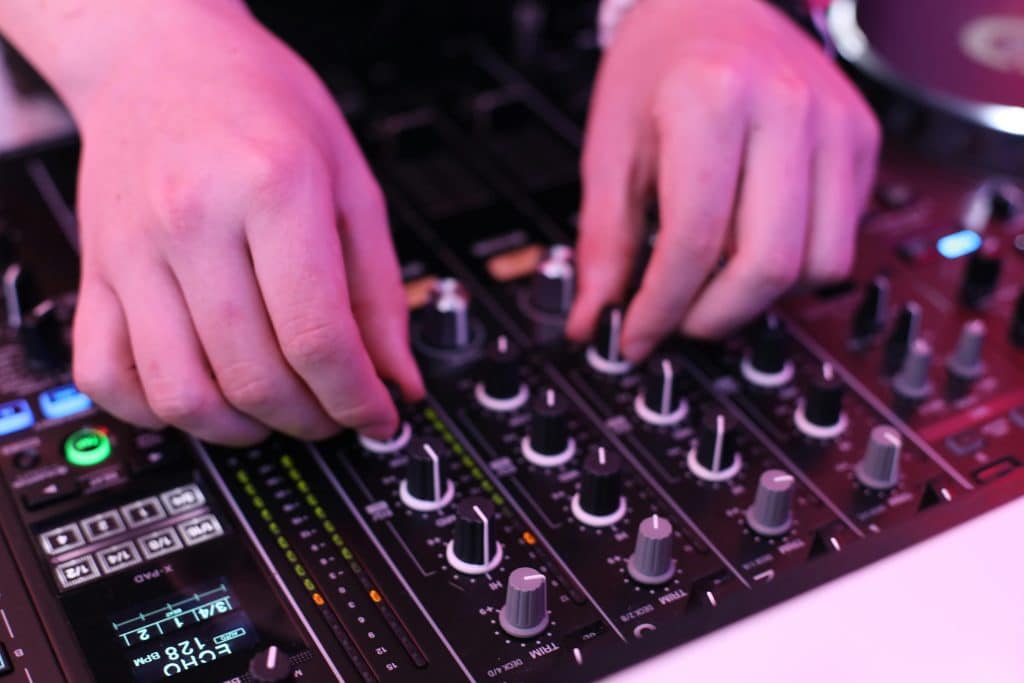
Mixers give you tools to change the tone or color of your music. These are equalizers (EQ) and filters. They let you adjust the bass, mids, and highs in each track.
Most mixers have three EQ knobs per channel: bass (low frequencies), mids (middle frequencies), and highs (high frequencies). Turning a knob up makes that sound range louder; turning it down makes it softer.
Using EQ, you can make your mixes sound clearer and less cluttered. For example, when two songs play together, you might lower the bass in one to avoid a muddy sound. Or boost highs on one song to make it stand out more.
Filters are special tools that let you remove certain frequency ranges. The most common are low-pass and high-pass filters. A low-pass filter blocks high sounds and lets low sounds through. A high-pass filter does the opposite. By turning the filter knob, you can sweep sounds in or out smoothly.
An example: When transitioning between songs, you can use a filter to slowly reduce the bass of the outgoing track. This builds tension and creates a neat, clean handover to the next song. DJs often use filters to make breakdowns or build-ups sound exciting.
Practical tip: Experiment with the EQ controls on your mixer. Try cutting bass or boosting highs to see the difference. Practice using filters during transitions to create smooth, professional-sounding mixes.
4. Effects Section: Adding Creative Flair
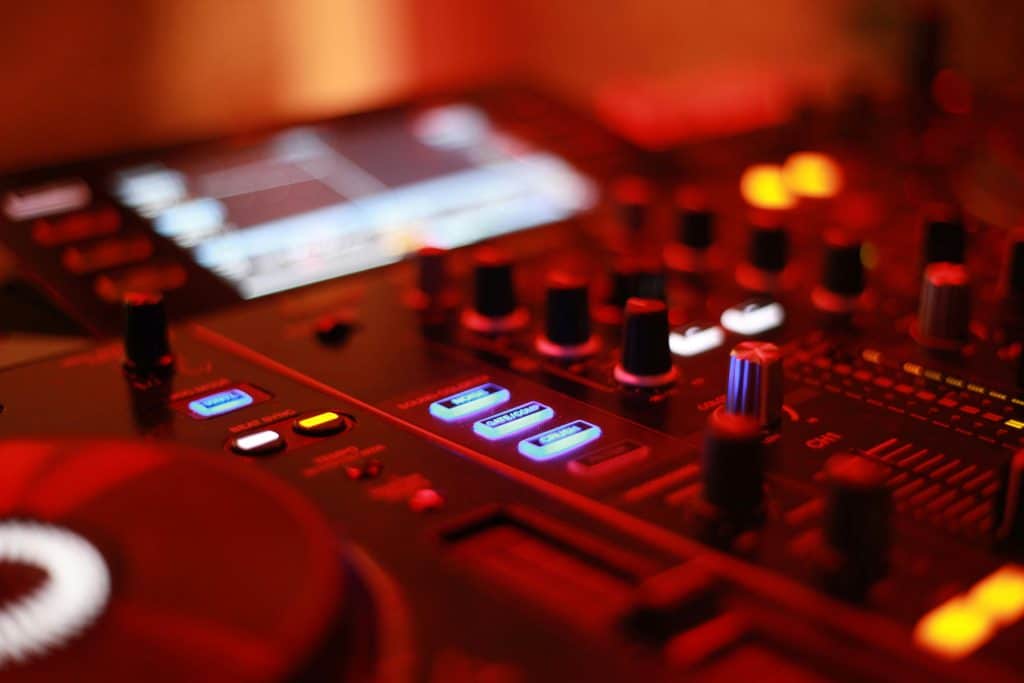
Many mixers come with built-in effects. These can be echoes, reverbs, delays, or special sound effects like flangers and phasers. Effects make your mixes more interesting and unique.
Effects work by changing the sound of your tracks temporarily. For example, adding echo makes the music repeat softly, creating a spacious feel. Reverb adds a sense of room or space to the sound. DJs use effects to highlight transitions or build excitement.
Usually, the mixer has knobs to turn effects on and off, select the type, and control how strong the effect is. Some mixers let you apply effects to one channel or the whole mix.
Example: During a set, you might add a delay effect to a vocal part just before switching songs. This draws the crowd’s attention and makes the handoff more exciting.
For beginners, start with simple effects like filters, echo, or reverb. Avoid using too many effects at once, which can confuse your mix.
Practical tip: Learn your mixer’s effects section well. Practice turning effects on and off smoothly and using them to highlight parts of your set. Always listen carefully to how effects change your sound.
5. Inputs, Outputs, and Routing Controls
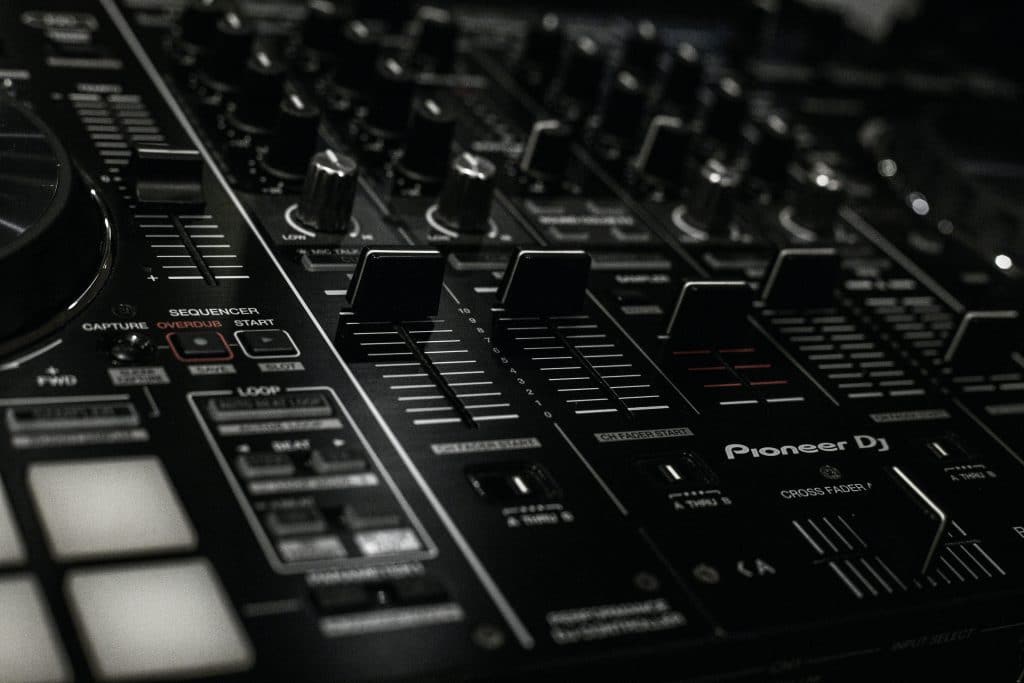
The mixer handles multiple audio inputs. These can be turntables, CD players, or digital players. The number of inputs is called channels. Most beginner mixers have two or four channels.
You decide which device goes to which channel on the mixer. You can also connect microphones or other sound sources.
Routing controls let you decide where the sound goes. For example, you can send one track to the headphones for previewing before playing it live. This is crucial so you can prepare your next song without the audience hearing it.
A mixer’s headphone cue system is used for this. You press a cue button on a channel, and that channel’s sound is sent only to your headphones. This lets you beatmatch and check levels before mixing it into the main sound.
Practical tip: Get used to using the headphone cue and switching between channels for previewing. This is key for smooth, professional DJing.
Real-World Scenario: Using Mixer Features at a Party
Imagine you are DJing a birthday party. You start with a popular dance track on Channel 1. The crowd is enjoying it, and you see it's time to bring in the next song. You load a new track on Channel 2 and listen to it in your headphones using the cue button.
You use the EQ to lower the bass on Channel 2 while gradually raising its volume with the channel fader. At the same time, you slowly lower the bass on Channel 1 with the EQ to avoid clashing bass sounds. You use the crossfader to smoothly blend from Channel 1 to Channel 2.
Just as the new song fully takes over, you add a gentle echo effect to the last beat of the old track to make the change exciting. This combination of volume control, EQ, crossfading, and effects makes your set sound professional and keeps the party lively.
Practical Tips for Working with Mixers
- Practice using channel faders to control volume softly and smoothly.
- Use the crossfader to quickly switch or smoothly blend between tracks.
- Learn to adjust EQ to balance bass, mids, and highs for clear sound.
- Try filters during transitions to create tension and clean handoffs.
- Start with simple effects like echo and reverb. Use them sparingly.
- Use headphone cue to listen to tracks before playing them live.
- Experiment with different mixer settings to find what works best for your style.
By mastering these mixer functions, you gain full control over your sound. This lets you create smooth, interesting, and unique DJ sets that keep your audience dancing and engaged.
Headphones, Speakers, and Monitors
Have you ever wondered how DJs hear music clearly in a noisy club? The secret lies in their headphones, speakers, and monitors. These tools help DJs mix songs perfectly and hear every beat, even when the crowd is loud. Let's explore how each works and how to pick the best ones for your DJ setup.
Why DJ Headphones Matter

DJ headphones are very different from regular headphones. They let you listen closely to the next song while the current track plays through the speakers. This helps you match beats and start the new song smoothly. Good DJ headphones also block out noisy crowds and loud music around you. That way, you can focus on the mix.
For example, imagine you're at a busy party, and the music is very loud. You need to hear the next track clearly to get the timing right. DJ headphones wrap around your ears fully (closed back style). This design keeps outside noise out but still lets you hear a little of the crowd so you can feel the vibe.
Comfort is another big deal. You'll wear headphones for hours, so choose ones with soft ear pads and an adjustable headband. Lightweight headphones reduce ear pressure, making long DJ sets easier. Some popular models like the Sennheiser HD 25 are known for being very light and durable, perfect for long gigs.
Durability is key too. DJ headphones might get dropped or bent on the job. Look for models with strong cables, sturdy hinges, and replaceable parts. For beginners, budget-friendly choices like Pioneer HDJ Cue1 offer good sound and comfort, but they may not last as long as high-end models.
Tip: Look for headphones that allow quick one-ear monitoring. This means you can flip one ear cup off to hear the crowd and speakers, while still listening to the next track in the other ear.
The Role of DJ Monitors
Monitors are speakers placed near the DJ that play the music at a safe volume for clear listening. They are different from the big speakers that blast music to the crowd. Monitors help DJs hear exactly what the audience is hearing, even in a loud room.
For example, at a club, the main speakers might be very loud and bass-heavy. It can be hard to tell if the mix sounds good when you only hear booming sounds. Monitors give a more balanced sound that shows all parts of the song clearly—from the deep bass to the high melodies.
Many DJs use “active” monitors. These have built-in amplifiers, so you just connect them to your mixer. This makes setup faster and easier. Monitors should be placed close and at ear level, forming a triangle between your head and the speakers. This helps you hear the sound evenly.
A small home DJ booth can benefit greatly from monitors. They help you practice mixing by giving a true sound picture. For live gigs, monitors help you catch mistakes early and adjust the mix smoothly before the audience notices.
Tip: If your room is small or has bad sound reflection, adding some foam panels to corners can help reduce echoes and make monitors sound clearer.
Why PA Speakers Are Different and Important
PA (Public Address) speakers are the big speakers that send music to the crowd. They are designed to be very loud and have extra bass to fill large spaces. Unlike monitors, PA speakers play music for dancing and parties, not for fine listening.
For DJs, understanding the difference between monitors and PA speakers is important. PA speakers are often “active,” with amps inside. Passive PA speakers need extra amplifiers. For portability and quick setup, active PA speakers are often better.
Example: When playing a festival, a DJ uses powerful PA speakers to fill the big outdoor space with sound. Behind the DJ, monitors help hear the mix clearly. Without monitors, the DJ might lose track of the mix because the PA speakers can distort or delay the sound.
Tip: Always connect your monitors and PA speakers separately from your mixer. This lets you control their volumes differently. You want monitors at a lower volume for listening, and PA speakers loud for the crowd.
Practical Advice: Setting Up Headphones, Monitors, and Speakers
- Step 1: Choose DJ headphones that feel comfortable and block outside noise. Try different models if you can.
- Step 2: Set up your monitors at ear height, about an arm's length away. Make sure they form a small triangle with your head.
- Step 3: Use the crossfader and volume controls on your mixer to switch between headphone cueing and the live mix on monitors and PA speakers smoothly.
- Step 4: Position your PA speakers safely, aimed at the audience, but out of your personal space to avoid feedback.
- Step 5: Test your setup with reference tracks you know well. Listen on headphones, monitors, and PA speakers to make sure your mix sounds good everywhere.
Real-World Example: DJ Sarah’s Setup
DJ Sarah is a beginner playing small parties. She chose Pioneer HDJ Cue1 headphones because they are budget-friendly and comfy. For her home practice, she has a pair of active monitors that help her hear every sound clearly without blasting her ears.
When she plays live, her DJ booth has two big PA speakers for the crowd. Sarah uses her headphones to listen to the next track, then checks the mix on her monitors before the crowd hears it. This system helps her mix songs perfectly and keep the dance floor moving.
One night, Sarah noticed some crowd noise leaking into her headphones. To fix this, she bought headphones with better noise isolation and learned to use one-ear monitoring more. This helped her focus better and improved her mixes.
Headphone and Monitor Tips for All DJs
- Always carry a spare headphone cable or adapter. Cables often break during gigs.
- Break in your headphones by using them for a few hours before a show. This helps you get used to their sound.
- When buying monitors, listen to them in a room similar to your DJ space. This helps you choose ones that suit your needs.
- Use room treatment like foam panels to improve monitor sound quality, especially in small rooms.
- Practice mixing with both headphones and monitors. This trains your ears to work in different sound environments.
- Keep your gear clean and store headphones in a case to protect them from damage.
Using the right headphones, monitors, and speakers is like having a clear window into your music. They let you hear the details that make mixes smooth and dance floors happy. By choosing good gear and setting it up well, you can DJ with confidence anywhere.
Cables, Connections, and Power Management

Have you ever seen a messy pile of cables under a DJ booth and wondered how to make it neat? Managing DJ cables well is like untangling a big knot—you want to keep everything clear to avoid problems during your set.
Understanding and Using the Right Cables
Not all cables are the same, even if they look alike. Using the right type of cable helps your sound stay clear and your gear work properly. For example, balanced cables are better for longer distances because they stop noise from messing up your sound.
Balanced cables, like XLR and TRS, have three wires inside. One wire carries the sound signal, the second carries an extra reverse signal, and the third is a ground wire. When noise enters the cable, it affects both signals equally. The mixer or speaker at the end flips the extra signal back. This cancels out the noise, so your music sounds clean, even if the cable is long.
Unbalanced cables, like RCA and TS, have only two wires and work best over short distances—usually less than four meters. If you use unbalanced cables for longer runs, you might hear crackling or humming sounds from interference. That’s not good at a live show.
For example, when connecting CDJs to your DJ mixer, use good quality RCA cables for short distances. But for connecting your mixer to powered speakers far away, use XLR cables to keep your sound clear.
Also, watch for cables that look similar but carry different types of signals. Digital coaxial and regular RCA cables have the same connectors, but digital coaxial cables are thicker and better shielded to carry digital signals without interference. While you can use an RCA cable in a pinch, it’s best to use the right digital coaxial cable for better sound quality.
Smart Connections and Data Sharing
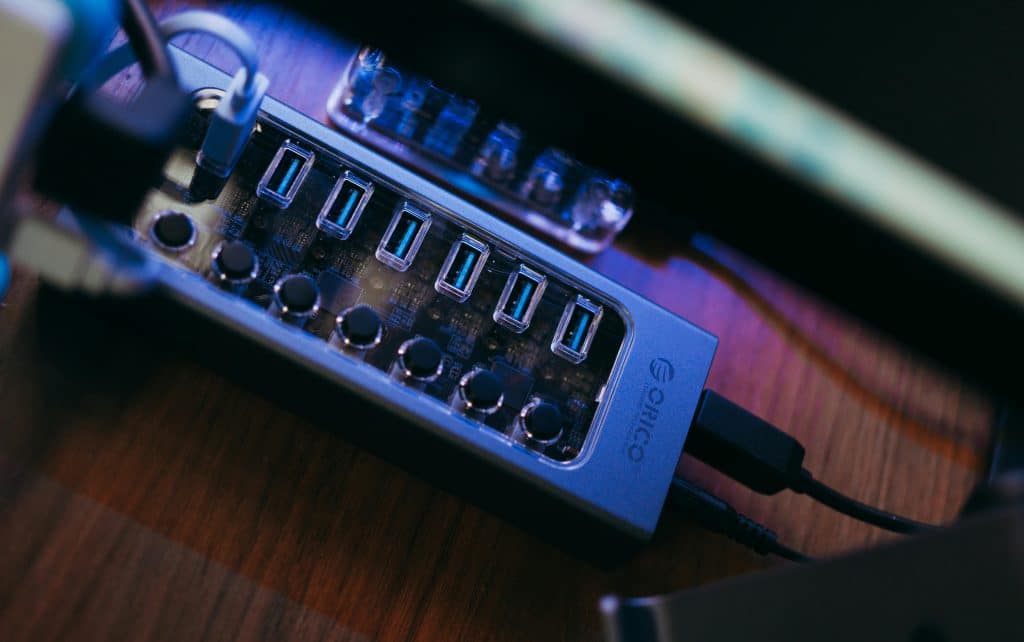
Some DJ gear needs to share data, like syncing beats or sharing music files. For this, you use special data cables such as USB and Ethernet cables.
USB cables come in different shapes, like USB-A, USB-B, and USB-C. Most DJ controllers and mixers use USB-B ports, while computers often use USB-A or USB-C. The good news is USB cables are backward compatible, meaning a newer USB cable will work with older gear, just at the speed that gear supports.
Ethernet cables, the same kind you use for internet at home, are used to link CDJs and mixers. Linking your gear with ethernet can unlock special features. For example, when you connect your CDJs and mixer with ethernet, effects on your mixer can sync with the music's beat. Also, the CDJ's platter lights can change color to show which channel is active, helping you stay in control.
But remember, if you link more than two CDJs, you need an ethernet hub (a small box with many ethernet ports) to connect all your gear properly.
Power Management: Keeping Your Setup Safe and Tidy
Power cables and managing electricity at your DJ setup is just as important as audio and data cables. A clean power setup helps prevent accidental unplugging, tripping hazards, and damages to your gear.
Many DJs face the challenge of messy power cables under their booths. One common mistake is using too many basic power strips and extension cords, which can create clutter and make it hard to find the right plug. Instead, try these smart tips:
- Mount your power strip under the booth or table: This keeps cables off the ground and prevents tangles. Use strong tape or hooks to fix the power strip in place.
- Use a box to store your power strip and bricks: This hides bulky power adapters and makes your floor safer and neater.
- Standardize your cable lengths and colors: Keep a set of power cables in fixed lengths (like 1.5m, 3m, 5m) and color-code them by length. This helps you connect gear quickly and avoid unnecessary slack.
- Consolidate power sources: Instead of plugging each device into separate outlets, link devices that can share power safely. For example, some powered speakers allow you to "daisy chain" power from one speaker to the next using PowerCON cables, reducing the number of cables you need.
Think of your power setup like the roots of a tree. If the roots are tangled and messy, the tree won’t stand strong. But if the roots are clean and organized underground, the tree will grow healthy and tall. Similarly, a clean power setup helps your DJ equipment work better and avoids sudden failures.
Examples from Real-Life DJ Setups
One DJ shared how mounting a power strip under the booth improved his setup. Before, cables hung loosely, causing trips and disconnections. After mounting the strip, cables ran neatly from both sides with Velcro ties bundling them together. He also used wireless DMX for lighting control, cutting down on cables even more.
Another DJ standardized all power cords by length and color. This made it easier to swap cables quickly if any broke. He also used Y-cables to split power for lights on the same stand, reducing the number of separate cables running to the power strip.
Tips for Organizing Your DJ Cables
- Velcro ties over zip ties: Use Velcro cable ties. They hold cables tightly but can be undone easily when you need to unplug or add gear. Plastic zip ties are permanent and may damage cables if cut the wrong way.
- Cable trays or channels: Attach plastic cable trays or channels under your desk. They keep your cables in a straight line and stop them from dangling or getting pulled.
- Use a laptop stand: If you DJ with a laptop, putting it on a stand frees up desk space and lets you run cables neatly behind or under the stand, reducing clutter.
- Speaker stands help too: Placing speakers on stands not only improves sound but lets you route cables cleanly along the stand legs, hiding them from view.
Step-By-Step for a Clean Power Setup
Here is a simple way to organize your power cables:
- Unplug everything and lay out all your equipment.
- Group devices by how much power they need and what kind of plugs they use.
- Choose a power strip with enough outlets and built-in USB ports for your needs.
- Mount the power strip under your booth or desk, using screws or strong tape.
- Use Velcro ties to bundle power cables coming from the strip. Keep cables to each device as short as possible.
- Route cables along the frame or legs of your booth to keep them off the floor.
- Store any extra cable length in a box or cable organizer to avoid tangles.
- Label your power cables so you can find and unplug the right one fast if needed.
Summary of Key Points for DJs
- Use balanced cables like XLR and TRS for long audio runs to avoid noise.
- Use the right cable type for digital signals to keep sound quality high.
- Link digital DJ gear with USB and Ethernet for synced features and data sharing.
- Keep power cables tidy with mounted strips, Velcro ties, and correct cable lengths.
- Consolidate power safely by daisy-chaining where possible to reduce cables.
- Use stands and cable trays to keep cables off floors and neat.
Mastering cables and power management might not be the flashiest part of DJing, but it keeps your setup working strong. A tidy system helps you perform without worries and lets you focus on playing great music.
Choosing the Right Equipment for Your Budget
Have you ever thought about how to best spend your money when buying DJ gear? Picking the right equipment for your budget is like building a strong foundation for a house. Spend wisely, and your DJ setup will last and work great. Spend too little or in the wrong places, and you might end up buying again soon or missing out on important features.
When you are choosing DJ gear, there are three big points to focus on: your budget range, your DJ goals, and how you want to grow. Let’s explore these points with real examples and tips to help you get the best gear without overspending.
1. Know Your Budget Range and What It Buys You
DJ gear prices can vary a lot. You can spend less than $200 or more than $2,000. Here are some typical budget groups and what you usually get in each:
- Budget under $500: You can get a basic 2-channel DJ controller. This is good for beginners who want to learn the basics like mixing two songs, beatmatching, and using simple effects. For example, the Pioneer DDJ-FLX4 costs about $299 and works well with popular DJ software like rekordbox and Serato.
- Budget $500 to $1,200: In this range, you can get 4-channel controllers or entry-level standalone players that don’t need a laptop. They offer more creative freedom with more tracks to mix, better jog wheels, and extra features like performance pads. An example is the Pioneer DDJ-1000 at around $899, which feels like club gear and has great effects.
- Budget above $1,200: This level is for serious hobbyists or beginner pros. You get standalone gear with big, high-quality jog wheels, touchscreens, and full software support. For instance, the Pioneer XDJ-RX3 at about $1,499 is a powerful all-in-one system that clubs use too.
Knowing these groups helps you set realistic expectations. If you want to play small parties at home, a simple controller under $500 is enough. If you want to perform at clubs or bigger events, plan to invest more later. You don’t have to buy the most expensive gear first. Start where you feel comfortable and grow your setup over time.
2. Match Equipment to Your DJ Style and Goals
Not all DJ gear fits every style or goal. Think about how you want to DJ:
- Digital DJing on Laptop with Controller: Most beginners choose this because it’s affordable and flexible. You can start with a small 2-channel controller like the Numark Mixtrack Platinum FX, which costs around $239. It has big jog wheels and some remix features to get creative.
- Standalone DJ Systems: If you want gear that works without a laptop, these let you load music from USB drives and play. They are more expensive but simpler to use. The Pioneer XDJ RX2 at about $1,099 is a great entry-level standalone.
- Turntables with Time-Coded Vinyl: For those who love vinyl or scratching, turntables are the go-to choice. Starting here requires a bigger budget, usually over $1,000 for quality direct-drive turntables and a mixer.
For example, Sarah wants to DJ at house parties with friends and isn’t ready to learn complicated gear. She chooses a Pioneer DDJ-200 for $154 because it is easy to learn and works with her phone apps. Meanwhile, Jake plans to become a club DJ and buys a Pioneer DDJ-1000 for $899 to practice with gear similar to clubs.
Choosing gear that fits your style lets you focus on learning and performing instead of fighting with complicated equipment.
3. Plan for Growth and Upgrades Without Breaking the Bank
DJing is a journey. You might start with simple gear but want to upgrade later. Picking equipment with growth in mind saves you money and hassle. Here is how to do it:
- Start with Gear that Supports Popular Software: Choose controllers compatible with well-known DJ software like Serato, rekordbox, or Traktor. This keeps your options open if you want to switch gear later.
- Look for Modular Gear: Some setups let you add pieces over time. For example, starting with a 2-channel controller and adding a mixer or speakers later is easier than buying a fixed all-in-one system.
- Buy Quality Used Gear: Buying second-hand can get you better gear within your budget. Check trusted sellers for well-maintained equipment that fits your needs.
For example, Alex started with a Numark Party Mix II (around $89) as a fun intro. After practicing for a year, they saved up for a Pioneer DDJ-FLX4 ($299), which offers more features but still fits their budget. This step-by-step plan helped Alex learn without feeling overwhelmed or wasting money.
Another tip is to budget for accessories and music. Good headphones and speakers cost extra but are needed for better sound. Also, buying or subscribing to music services like Tidal or Beatport helps keep your library fresh. These costs add up, so include them in your overall budget.
Practical Tips for Choosing Gear on a Budget
- Make a Gear Priority List: Write down what you need first (usually a controller and headphones). Then list what you can buy later.
- Try Before You Buy: If possible, test equipment in stores or watch online demos to make sure it feels right for you.
- Read Reviews and Watch Tutorials: See how others use the gear and if it fits beginner needs.
- Check for Bundles: Some stores sell packages with controllers, headphones, and software at a discount.
- Set a Spending Limit: Stick to your budget by choosing the best gear within that limit, not more.
For example, Lucy had $400 to spend. She found a bundle with a Hercules DJ Control Inpulse 300 Mk2 controller ($154), DJ headphones, and beginner software. This gave her a complete setup for her budget and helped her start right away.
Case Study: Budgeting for DJ Equipment
Imagine you have $600 and want to start DJing. Here’s how you could spend:
- Controller: Pioneer DDJ-200 for $154 - easy to use and beginner-friendly.
- Headphones: A good pair like Pioneer HDJ-CUE1 for $69 - comfortable and clear sound.
- Speakers: Basic studio monitors like Pioneer DJ DM-40D for $149 - clear sound for home practice.
- Software: Serato DJ Lite included with the controller (free).
- Music: Buy some tracks or subscribe to a DJ-friendly streaming service for $100.
This setup totals about $472, leaving room for cables or small accessories. By planning each part, you get a solid setup without surprises. Plus, you can upgrade speakers or add a mixer later as your skills grow.
In contrast, trying to buy all pro-level gear at once could cost over $2,000, which is too much for a beginner. It might lead to unused equipment and wasted money.
Summary of Key Points for Choosing Equipment on a Budget
- Understand what each budget level buys to set realistic expectations.
- Match your gear choices to your DJ style and goals for better learning.
- Plan for future upgrades to make your investment last longer.
- Use bundles, second-hand gear, and software options to save money.
- Include accessories and music costs in your overall budget plan.
By treating your budget as a tool to build your DJ setup step-by-step, not just a limit, you can get better gear faster and enjoy learning more. Choosing smartly now helps you grow as a DJ for years to come.
Setting Up Your Home DJ Booth
Have you ever wondered what makes a DJ booth at home both comfy and practical? Setting up a home DJ booth is like creating your own music command center. It helps you practice, create, and even perform easily. To get it right, focus on three crucial parts: space and layout, equipment placement and height, and lighting and ventilation.
Choosing the Right Space and Layout
First, pick a good spot in your home for the booth. It should have enough room for your gear and allow you to move freely. Measure your space carefully to be sure everything will fit. For example, if you want a booth with two CDJs and a mixer, make sure the table or stand can hold them without crowding.
Think about where the booth will face. If you usually play at parties or with friends, facing the room is better so you can see and engage with people. If you don’t have much space, placing the booth against a wall works, but it might feel a bit closed off. Some DJs solve this by putting their booth on wheels (casters), so they can turn it around or move it when needed. Imagine having a robot DJ booth that can slide to face a room or wall whenever you want!
Real-world example: Leo, a home DJ, found mixing facing a wall lonely. He put his booth on casters and wired everything so he could easily pull it out and turn it to face the room for his friends’ parties. This small change made his DJ time much more fun and social.
Equipment Placement and Height
Your booth must be comfortable to use. A key rule is to have your DJ gear at elbow height when you stand or sit. This prevents strain on your arms and back. Measure your elbow height before building or buying a booth. If your equipment sinks into the booth, check how tall each device is. Some DJ gear is taller than others, and you don’t want surprises after building.
For example, if you’re using a Pioneer DDJ-FLX4 controller, which is fairly slim, your booth’s surface can be a bit lower. But if you add turntables or a mixer with tall knobs, plan for extra height.
In addition to height, consider spacing between devices. You want enough room to move your hands quickly without bumping into gear. Try placing your controller, mixer, and headphones on a table to see how much space you need. A cramped setup slows you down and causes mistakes.
Practical tip: Use an IKEA Kallax unit for storage and add a small table or TV bench on top for your equipment. This hack is popular because it provides shelves for records and gear, and the surface is at a good height for many DJs. You can even add LED strips under the tabletop to brighten your workspace.
Lighting and Ventilation Considerations

Good lighting helps you see your controls clearly, especially in low-light home setups. Use adjustable lamps or LED strips around your booth. Place a light so it doesn’t shine in your eyes but lights up your gear well. Colored lighting or backlighting can also add atmosphere, making your booth feel more like a real DJ spot.
Example: Sarah added LED strips under her mixer shelf. This not only helps her see the buttons better but also creates a cool look when she streams her mixes online.
Ventilation is also important. DJ gear gets warm, especially mixers and amplifiers. Without airflow, your equipment might overheat and get damaged. If your booth is in a small room, think about adding a small USB fan to keep air moving. It helps protect your gear and keeps you cool during long sessions.
Case study: DJ Ollie noticed his mixer overheated during hours of practice. He bought a small, quiet USB fan that clips near the gear. The fan keeps air flowing and prevents overheating, helping his equipment last longer.
Step-by-Step Setup Example
- Step 1: Measure your space and decide booth location. Make sure it fits your gear and allows movement.
- Step 2: Measure your elbow height to set the right table or shelf height for comfort.
- Step 3: Choose a stable surface like a desk or modified storage unit (like IKEA Kallax and Lack bench) for your equipment.
- Step 4: Arrange your DJ controller, mixer, and other gear on the surface, leaving enough space between devices for easy access.
- Step 5: Add lighting that illuminates your controls without glare. LED strips or adjustable desk lamps work well.
- Step 6: Check ventilation: add a small fan or ensure good airflow around your gear to avoid overheating.
- Step 7: Test the setup by practicing your mixes. Adjust anything that feels uncomfortable or awkward.
Tips for Different Situations
- Small rooms: Use vertical shelving to save floor space. Store records and accessories on shelves below the desk surface.
- Shared spaces: Pick a setup that can be covered or closed when not in use. Portable booths or ones with sliding doors help keep the area tidy.
- Streaming DJs: Leave some space for cameras, laptops, and lighting rigs. Make sure cables are neatly managed to avoid tangles during live streams.
By carefully planning your home DJ booth’s space, equipment height, lighting, and airflow, you build a setup that is both enjoyable and practical. This helps you focus on learning to mix and practicing your skills without distractions or discomfort. Good planning now saves you time and hassle later, making your DJ journey smoother and more fun.
Portable vs. Permanent DJ Rigs
Have you ever wondered what it’s like to carry all your DJ gear in a backpack versus having a setup that stays put in one place? That difference is exactly what we call portable versus permanent DJ rigs. These two types of setups affect how you prepare, perform, and pack your equipment. Let’s explore their main differences and how to choose the right one for you.
1. What Makes a DJ Rig Portable?
A portable DJ rig is designed to be easy to move. It fits into bags, cases, or backpacks and is lightweight enough to carry. This setup usually includes a compact DJ controller, a laptop, a pair of headphones, and small powered speakers or connects to venue speakers.
For example, imagine a DJ who plays at small parties and pop-up events in different places. They use a portable rig because it lets them easily pack everything in their car or on public transport. Their gear might include a small 2-channel controller like the Pioneer DDJ-200, a laptop with DJ software, and headphones like the Pioneer HDJ-X5. This keeps things light and simple.
Portable rigs often lack some features of bigger setups, but they give DJs the freedom to play almost anywhere. You can DJ in a park, at a friend’s house, or a small bar with this gear. It’s like having a music-making suitcase you can open anywhere.
Practical Tips for Portable Rigs
- Choose gear that fits into a sturdy, padded backpack or case.
- Use gear with USB power options or battery power for flexibility in places without outlets.
- Pick lightweight speakers or rely on venue sound systems to avoid heavy gear.
- Practice setting up quickly and neatly to be ready anywhere fast.
One DJ shared a story: "I once had to play at a party in a remote park. My small controller and battery-powered speakers fit in my backpack, and I was ready to go within ten minutes. It was a huge hit because my setup made it easy to adapt."
2. What Defines a Permanent DJ Rig?
A permanent DJ rig stays in one place, like a home studio or club booth. It is usually larger, heavier, and includes high-end gear like professional CDJs, turntables, a mixer, and big monitor speakers. This setup is not designed to be moved often.
Think of a DJ who performs every weekend at the same club or a serious hobbyist with a home booth. Their rig might have Pioneer CDJ-3000 players, a 4-channel mixer, and powerful monitor speakers. This gear offers better sound quality, more control, and extra features for complex mixing.
Because this setup is fixed, it can include cables neatly arranged, external effects machines, and lighting controls. DJs who use permanent rigs spend time perfecting their sound and workflow in one spot. It’s like having a music command center at home or work.
Practical Tips for Permanent Rigs
- Set up your gear on a sturdy table or booth designed for your equipment's size and weight.
- Use cable organizers to keep connections tidy and safe.
- Invest in professional-grade headphones and monitors for the best sound accuracy.
- Regularly check and clean your equipment since it stays in place and can collect dust.
For example, a club DJ said: "Having a permanent setup means I always know where my gear is and that it’s ready to perform. The sound quality is crystal clear, and I have room to add effects units or samplers."
3. Choosing Between Portable and Permanent DJ Rigs
Your choice depends on your style, where and how often you play, and your budget. Portable rigs are great for DJs just starting, gigging at multiple places, or those who like to play on the go. Permanent rigs suit DJs who perform regularly in one spot or want high-quality equipment for serious mixing.
Here’s a breakdown to help you decide:
- Portability: If you move a lot or play small events, portable gear is best.
- Sound Quality: Permanent setups often have better sound and durability.
- Space: Permanent rigs need more room; portable rigs fit in small spaces.
- Setup Time: Portable rigs need fast setup skills; permanent rigs are always ready.
- Cost: Permanent gear is usually more expensive but built to last.
Case Study: A mobile DJ uses a portable setup with a small controller, laptop, and compact PA system. They can pack everything in one trip to different weddings and parties. Meanwhile, a club DJ uses a permanent rig with CDJs and a mixer for weekend gigs. Their setup is heavy and complex but offers many options during shows.
4. How to Manage a Portable DJ Rig Effectively
Working with portable gear means planning carefully. Here’s a simple step-by-step guide:
- Choose compact gear: Select controllers and speakers that are light and fit your carrying case.
- Organize your music: Store your tracks on a USB or laptop for quick access.
- Pack smart: Use padded cases to protect your gear on the move.
- Test your setup: Practice setting up at home so you know how long it takes and what to expect.
- Bring backups: Carry extra cables, adapters, and batteries for emergencies.
For instance, a DJ preparing for a festival used this method. They packed a lightweight controller, headphones, and small powered speakers. They labeled all cables and tested everything before the event. On the day, setup was quick and stress-free, allowing them more time to prepare their setlist.
5. Tips for Enhancing a Permanent DJ Rig
Once you have a permanent setup, you can customize it to improve your skills and performance:
- Invest in quality cables: Good cables reduce noise and connection issues.
- Position speakers correctly: Place monitors at ear level and angle them for best sound.
- Add extra gear: Include effects pedals, samplers, or lighting controllers for creativity.
- Maintain gear regularly: Clean dust, check connections, and update software.
- Create a comfortable booth: Use lighting and ergonomic furniture to make long sessions easier.
One home DJ shared: "I added a sampler and effect unit to my permanent rig. It took my mixes to the next level because I can add live creativity. Plus, having everything set up saves me time to focus on mixing."
6. The Middle Ground: Semi-Portables
Some DJs use rigs that combine features from both types. For example, they might have a small mixer plus two CDJs that fit into road cases. These rigs are heavier than fully portable setups but can still be moved if needed.
This middle option is popular with mobile DJs who want better gear but still need to travel. It teaches you how to handle larger setups while staying flexible. It’s a step towards a permanent rig but keeps the option for portability.
For example, a wedding DJ might bring two CDJs, a mixer, wireless mics, and portable PA speakers. While heavier, this gear sounds better and handles bigger venues. They rent a van to transport everything but still manage quick setups.
Summary
Choosing between portable and permanent DJ rigs is one of the biggest decisions for any DJ. Portable rigs offer freedom and flexibility, ideal for gigging in many places. Permanent rigs provide top sound quality and stability for regular performances in one spot. Knowing your style and needs helps you pick the right setup.
Remember, you can always start with a portable rig and grow into a permanent setup later. Many famous DJs began with small gear and gradually added to their rigs. Your equipment should match your goals, location, and how you like to perform.
Equipment Maintenance and Troubleshooting
Have you ever wondered why your DJ gear can suddenly stop working in the middle of a set? Think of your equipment like a garden that needs regular care to stay healthy. Without watering and weeding—cleaning and checking—problems can grow quickly. In this section, we’ll explore how to maintain your DJ equipment well and fix common problems fast. This will help you keep your gear ready for every gig.
1. Regular Cleaning: The First Step to Trouble-Free Gear
Dust, sweat, and spills can quietly harm your DJ gear over time. These things get stuck in tight spots like buttons, faders, and knobs, making them sticky or unresponsive.
Example: A DJ noticed their mixer’s faders felt stiff and didn’t respond well. Turning it over and blowing compressed air into the gaps cleared out dust and crumbs, making the faders smooth again.
How to clean your gear properly:
- Use a soft microfiber cloth to wipe away dirt from surfaces gently.
- Use compressed air cans to blow dust out from between knobs, faders, and switches without opening the device.
- For stubborn grime, lightly dampen a cloth with water or isopropyl alcohol and wipe surfaces carefully.
- Never spray liquids directly on your equipment to prevent damage.
- After cleaning, allow the gear to dry fully before turning it on or packing it away.
Cleaning your gear after every gig prevents dirt from building up. For example, DJs who use turntables should clean the needle (stylus) carefully every time. This stops skips and keeps the sound clear.
2. Checking and Securing Connections to Avoid Faults
Loose or worn cables and connections cause many common DJ problems, like sound cutting out or muffled audio. Regularly checking these parts helps catch trouble before it starts.
Real-World Case: During a club gig, a DJ’s sound suddenly dropped from one speaker. They unplugged and reseated the speaker cable and tightened all connections. The sound came back instantly, saving the show.
Steps to keep connections solid:
- Inspect all audio, power, and USB cables for cuts or worn spots.
- Make sure connectors (XLR, SpeakON, RCA) fit tightly and aren’t loose or corroded.
- Replace any damaged cables to avoid signal loss or shorts.
- Secure cables neatly to prevent strain or accidental unplugging during setups or performances.
- Check internal screws and panel mounts on speakers and mixers to avoid rattles or loose parts.
Even a small loose connection can cause big issues. Being proactive here saves stress during a live set.
3. Troubleshooting Common DJ Equipment Problems Step-By-Step
When problems hit during a set, staying calm and following a step-by-step plan helps fix issues quickly. Here are some frequent problems and how to solve them.
Problem: No Sound or Sound from Only One Channel
Check if the cables are plugged into the right places and fully connected. Swap cables if needed. Move the audio source between channels and back to find where sound cuts out. Look if the crossfader or volume controls are set too low.
Example: A DJ noticed sound only from the left speaker. They checked the right speaker cable and found it was loose. Tightening it restored full sound.
Problem: Stuck or Unresponsive Buttons and Knobs
Use compressed air to blow dust from around buttons and knobs. For sticky faders, gently move them back and forth while blowing air. If this fails, a professional may need to open the device to clean or replace parts.
Problem: Audio Dropouts or Intermittent Sound
Check power supplies and all cable connections. If using a USB device for music, try unplugging and plugging it back in or switching USB ports. Restart software or the gear if possible.
Case Study: One DJ faced repeated audio dropouts caused by a faulty USB port on their mixer. Switching to the second USB port fixed the problem and allowed the set to continue smoothly.
Problem: Skipping or Distorted Vinyl Playback
Carefully clean the turntable’s stylus with a soft brush. Adjust the tracking force (how much weight the needle applies to the record) and the anti-skate controls to correct sound quality. Replace the stylus if worn.
Practical Tips for Effective Maintenance and Troubleshooting
- Create a Maintenance Schedule: Clean turntables after every use, mixers weekly, and speakers and amplifiers monthly.
- Keep Spare Cables and Parts: Always carry extra USB drives, RCA cables, and power cords to swap out quickly.
- Use Protective Cases: Carry your gear in padded cases to prevent damage during transport.
- Prepare Backup Music: Have music on a USB stick or phone as a backup in case your primary system fails.
- Know Your Gear: Spend time learning your equipment setup at home. Familiarity helps you find and fix problems fast on stage.
- Avoid Quick Panic Moves: During a gig, don’t unplug cables randomly—this can make problems worse.
Examples of Equipment Maintenance in Action
Example 1: A wedding DJ always cleans the DJ controller’s surface and knobs after each event. This stops dust from jamming controls and keeps the device smooth.
Example 2: A club DJ routinely tests speakers before shows by playing test tones. This helps catch any distortion or missing sound early, allowing time for repair.
Example 3: During a festival, one DJ experienced freezing software. They switched to a backup USB player for the crowd while safely rebooting their laptop and mixer, avoiding a silent set.
Handling Unexpected Problems: A Step-By-Step Scenario
Imagine you’re mid-set and suddenly the sound cuts out:
- Stay calm. Silence is better than panic noise.
- Check if all cables to speakers and mixer are tight.
- Look to see if the mixer’s power is on and volume knobs are up.
- If you use a laptop, try unplugging and replugging the USB or restarting software during the next quiet moment.
- If you have a backup player like a USB stick with music, switch to it to keep the party going.
- Once the problem is solved, return to your main equipment smoothly.
This plan helps avoid dead air and keeps your audience happy, showing professionalism in tough moments.
Summary: Why Maintenance and Troubleshooting Matter
DJ gear is like a fine machine that needs careful care. Dust and loose parts can make it fail at the worst times. By cleaning regularly, checking parts, and knowing how to fix simple problems, you protect your investment and avoid stress. Having extra cables, backup music, and knowing your setup inside out makes you ready for any challenge. Applying these maintenance and troubleshooting skills keeps your DJ career smooth and your shows unforgettable.
Mastering Your DJ Gear for an Unforgettable Performance
DJ equipment is the heart of every great performance. From choosing the right setup—be it controllers, turntables, or CDJs—to learning how to use mixers, effects, and sound systems, getting to know your gear inside and out unlocks your full potential as a DJ. The right equipment helps you create smooth beat-matches, build dynamic playlists, and add unique sounds that keep the dance floor lively and your audience engaged.
Remember, the best setup is the one that fits your style, goals, and budget. Portable rigs offer flexibility to play anywhere, while permanent setups give you rich features and sound quality for serious mixing. Proper organization of cables and power keeps your space safe and your setup efficient, allowing you to focus on what matters—your music and your crowd.
Taking care of your equipment with regular maintenance and learning simple troubleshooting steps ensures you stay ready for any gig without unnecessary stress. Comfort in your home booth, clear sound from your headphones and monitors, and thoughtful lighting create an environment where you can fully focus on honing your skills and expressing your creativity.
By understanding and mastering your DJ gear, you prepare yourself for everything the DJ journey brings—from small parties to big festivals. This solid foundation lays the path to grow your style, connect with your audience, and stand out as a unique and confident DJ. Embrace your gear, practice often, and enjoy every moment of making music that moves people.
Lesson Audio

